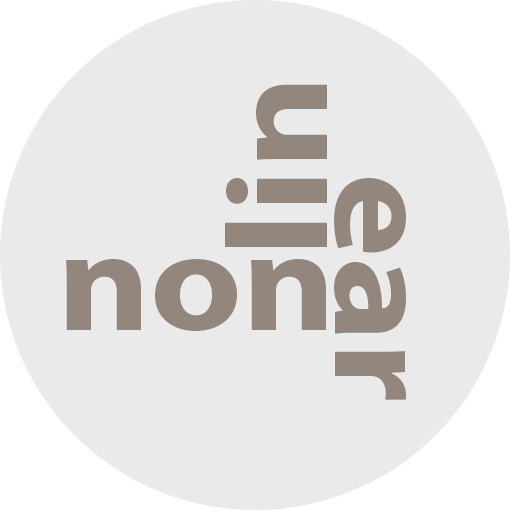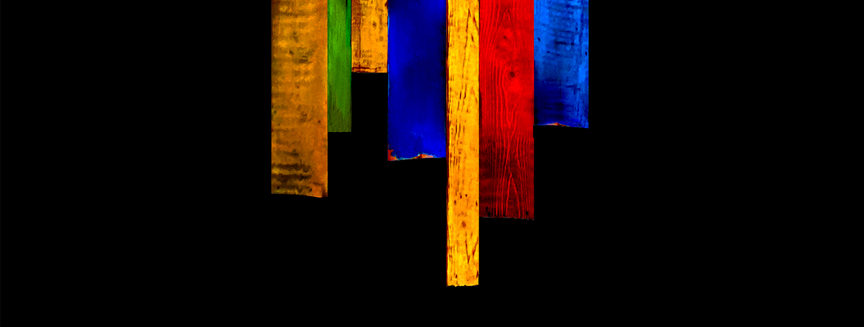

WRITTEN & SHOT ON iPHONE: STEVE HOLLOWAY
General location practices plus a step by step deep dive into how the portrait, food, architectural, night, car, landscape, shape, pattern, abstract and assemblage images were created.
- 03A Working with light.
- 03B The scout.
- 03C Shooting during the golden hour.
- 03D Photographing people.
- 03E Details, shadows, shapes and textures.
- 03F Plate shots and reflections.
- 03G Feed your passions.
- 03H People and food, two of my favorite subjects.
- 03I On the road.
- 03J Wall art (it’s not what you think).
- 03K Transitional images.
- 03L Night photography.

I rely on the ability iPhone has to utilize the natural light in almost any scene. For portraits especially, I look for open shade areas. I also look for ways to use window light. Window light is almost always soft, directional and warm. It’s especially good for still lifes, portraits and food photography.

Travel photography is usually shooting what you see when you see it.
Sometimes, when we stay in one city or town for several days, there is usually a location I really want to capture. That I can return to several times, giving me the chance to scout it first. If possible, I visit the location at 2 or 3 different times of day. I look at the light and at camera angles, taking test shots of each.
Finally, I choose a time and plan how I’m going to capture the location. Does it always go as planned? No. That’s what makes shooting on location interesting. In Rockport, there was too much glare on the bay behind our hotel during the day and it was too cloudy every evening.
Every evening that is except the last evening when everything fell into place and I got the image below.

The last hour before sunset and the first hour after sunrise are the “golden hour”. Movies will shoot for an hour after sunrise and an hour before sunset for days to capture a golden hour scene.
Shoot during the golden hour’s even, soft, directional, warm light and it will be hard to overexpose or underexpose highlights or shadows. It’s almost always the perfect light to capture extraordinary images.
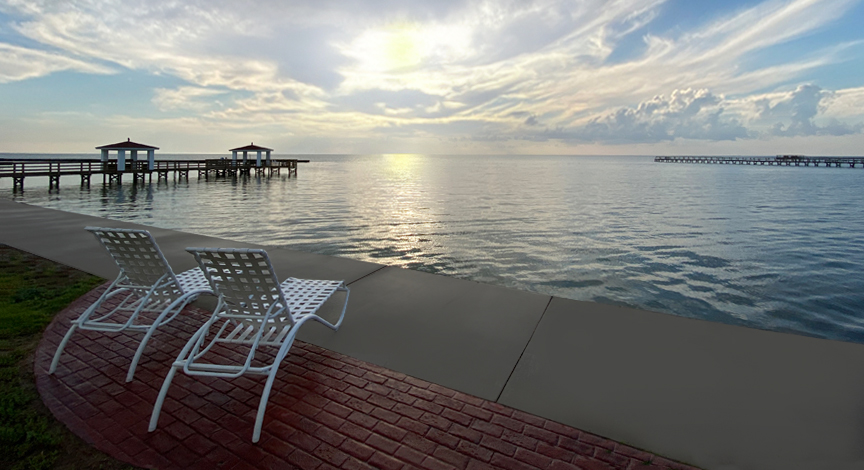
The Bay Behind The Lighthouse Inn. During our Back to the Coast road trip, I photographed Rockport Bay outside of our room at The Lighthouse Inn more than once and wasn’t happy with any of the shots.
Then, on our last night, shortly before sunset, during the golden-hour, I looked out the window of our room. The clouds had broken and the sunlight was skimming perfectly across the water. I hurried to get outside. I started with a view from our back patio then moved closer. I shot at the ground level point of view. Then eye level. Finally, I placed the camera at waist level and captured this image handheld on an iPhone 11 Pro Max with Beastgrip and Bluetooth shutter release.

Portraiture is one of my favorite disciplines. Pulling out a DSLR rig can be intimidating to some people. Shooting with an iPhone is just the opposite. People are used to selfies and smartphones making an iPhone unobtrusive. So much so that a photographer can blend in with what’s going on adding a level of spontaneity to capturing images.
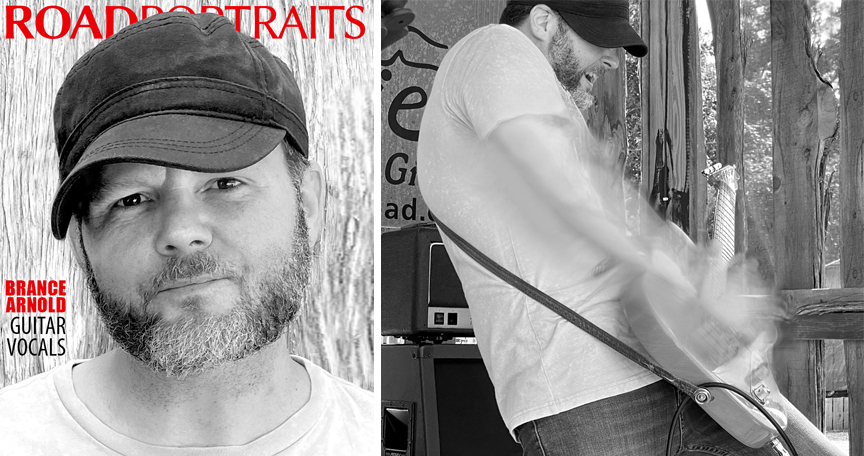
This portrait for the cover and live action photo of Brance Arnold for Road Portraits were captured using natural light on location. The cover image was photographed hand held in open shade. The on-stage live was photographed using natural light. Both images were captured on an iPhone 11 Pro Max with Beastgrip and Bluetooth release.
Post production included using the Long Exposure option in Live Photo to add motion to the on-stage image then offloading the images for background clean up, recombination and conversion to monochrome.

Look around any scene and you will find details that tell a bigger story. Details that become the subject.
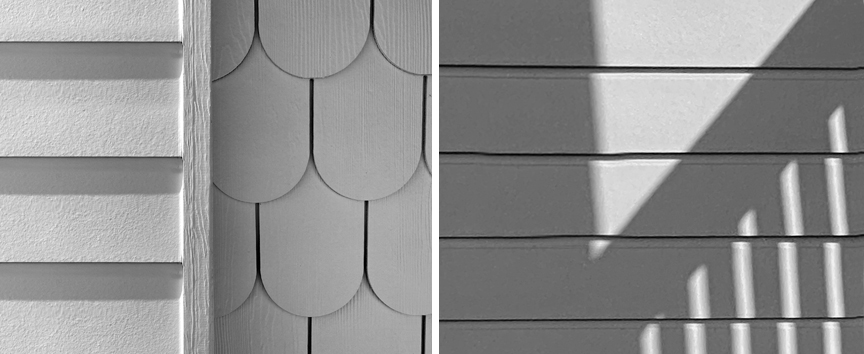
The siding of the Lighthouse Inn, Rockport Texas, photographed in mid-afternoon suggest the surroundings and warmth of a sunny day at the beach.
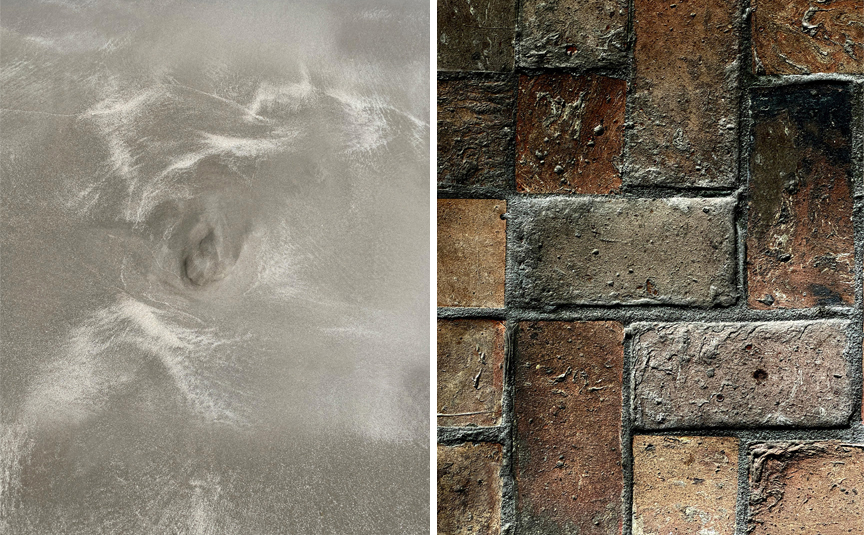
Sometimes the most interesting subjects are right under foot. The sand at Rockport Beach (left) formed this abstraction and the stone brick floor (right) in the Church in Goliad provided this textured, geometric pattern.
Photographed hand held with an iPhone 11 Pro Max with Beastgrip and Bluetooth release rig in natural light.

Plate Shots are background images you use to add elements to. This technique is borrowed from film making. It let’s you build the images you imagine that would, otherwise, be difficult to capture in one image.
Shooting reflections creates some of my favorite images. Look for glass or water in a scene that it reflecting a subject and choose your angle of view to control where the image is distorted.
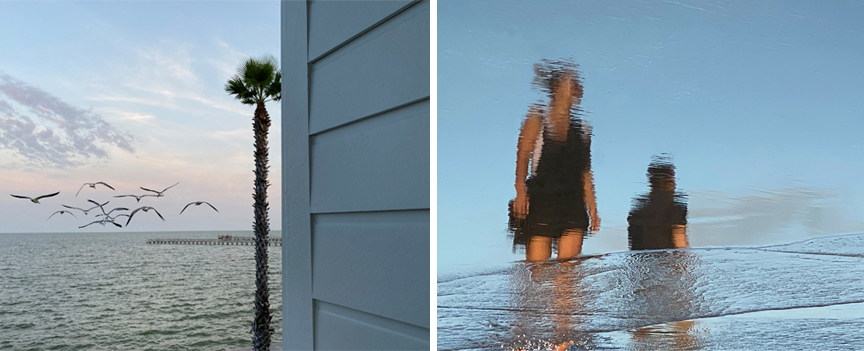
The bay scene outside of the Lighthouse Inn (above left) was captured to use as a Plate Shot. The gulls were photographed as part of a series of gulls images the evening before at Rockport Beach to use as elements in other images. I offloaded the images, cleaned up the sky and water, corrected the perspective of the wall and created a mask to take the gulls and place them near the horizon.
The beach reflection image (above right) was captured midafternoon at Rockport Beach. I spent 5-10 minutes looking down at the sand, watching the people walk by and the ocean water come in and recede. I started shooting when the elements came together capturing this reflection. The water ripples held enough detail that you can see it’s two people while turning them into abstractions at the same time.
Both images were captured on an iPhone 11 Pro Max with Beastgrip and Bluetooth shutter release.

One of my passions is vintage cars. If there’s a vintage car show within driving distance, we’re there. Photographing what you’re passionate about will instinctively add a unique point of view to the images.
So, what are your passions? Antiques? Unique Hotels? Exquisite food? Sporting events? Fishing? Camping? Hiking? Whatever they are, start focusing on them (if you don’t already).
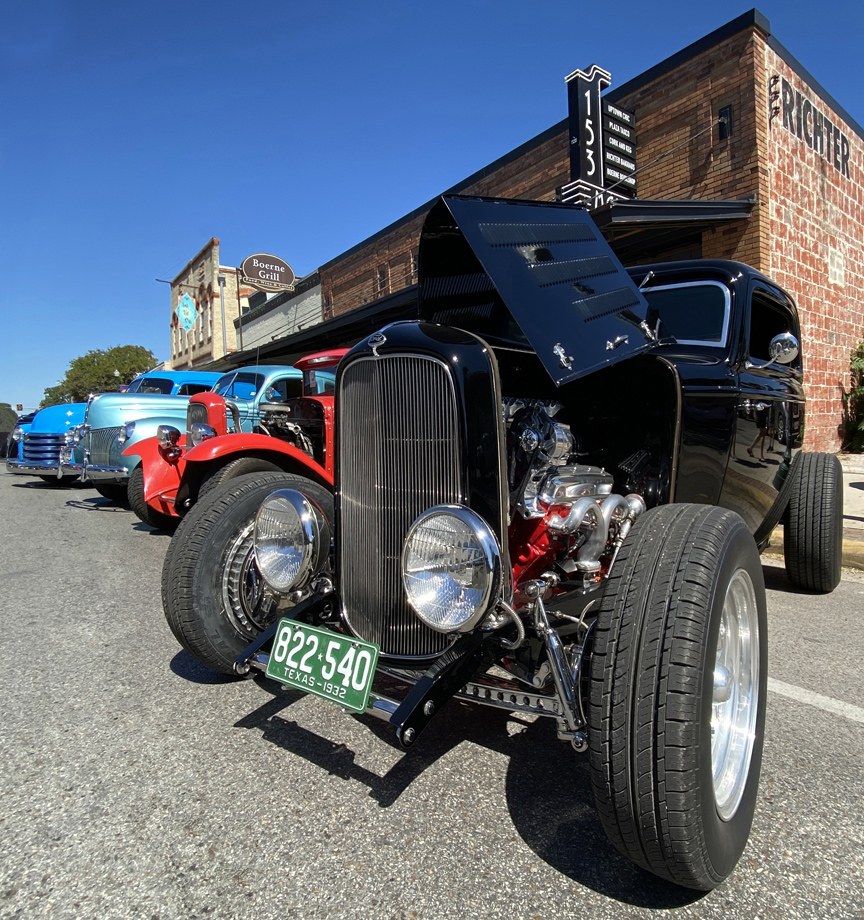
1932 Ford Deuce Coupe. Photographed at the 2021 Key to the Hills Rod Run car show. Captured on an iPhone 11 Pro Max with Beastgrip and Bluetooth shutter release in natural light. Camera positioned at headlight level.

Even when you’re shooting formal portraits, the iPhone lets you work lighter and faster on location. For food, I’m able to capture images, fresh out of the kitchen, as I’m being served. It’s the most intuitive process for photographing food I’ve found.
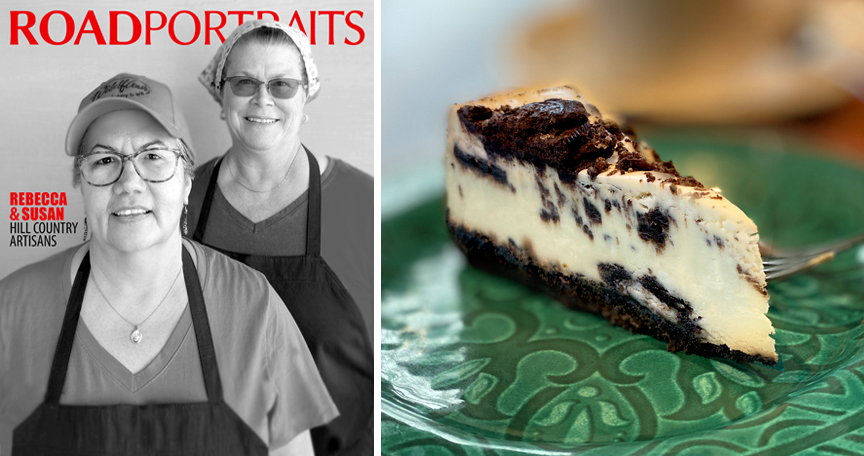
The portrait for Road Portraits (above left) was captured on location at the Wildflour Bakery. Photographed on a tripod with natural light in open shade. Using a tripod let me take my eyes off the screen and look directly at people to capture different expressions.
The Oreo Cheescake (above right) was captured in Portrait Mode using natural room light plus window light from behind the subject and a small amount of supplemental light from handheld Lume Cube positioned behind and to the right.
Portrait Mode is one of my favorite techniques for photographing food. The blurred background focuses attention on the food. Photographed on location in Portrait Mode using natural light.
Post production included onboard color cleanup and offloading to clean up the background and skin tones in the cover image and reorient parts of the food image to appear squared to edges.
Captured on an iPhone 11 Pro Max with Beastgrip and Bluetooth shutter release in natural light.

Road trips, more than any other factor, were one of the biggest motivators to start using my iPhone more and more often. iPhones on the road remove every obstacle that any other camera impose as you drive down the road.
Driver point of view images and scenics captured from a moving vehicle? No problem. Pull over, shoot and get back on the road in just a few minutes? Easy. Everything about road trip images is easier with an iPhone.
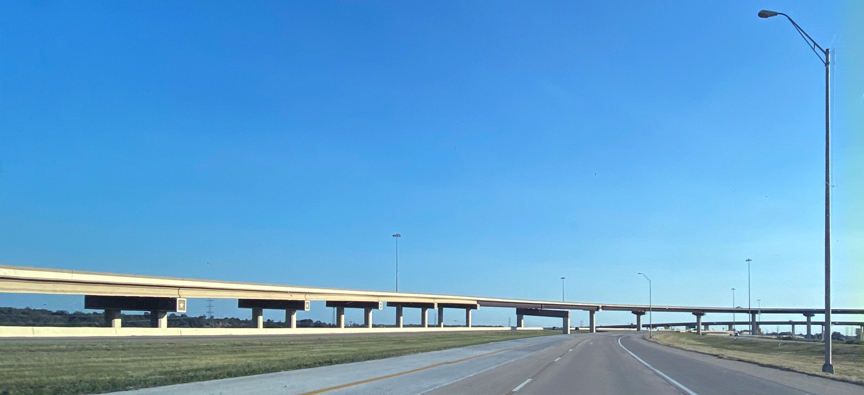
The view through the windshield at 60mph driving the onramp to the Texas Toll Road. Captured on an iPhone 11 Pro Max with Beastgrip and Bluetooth shutter release in natural light.
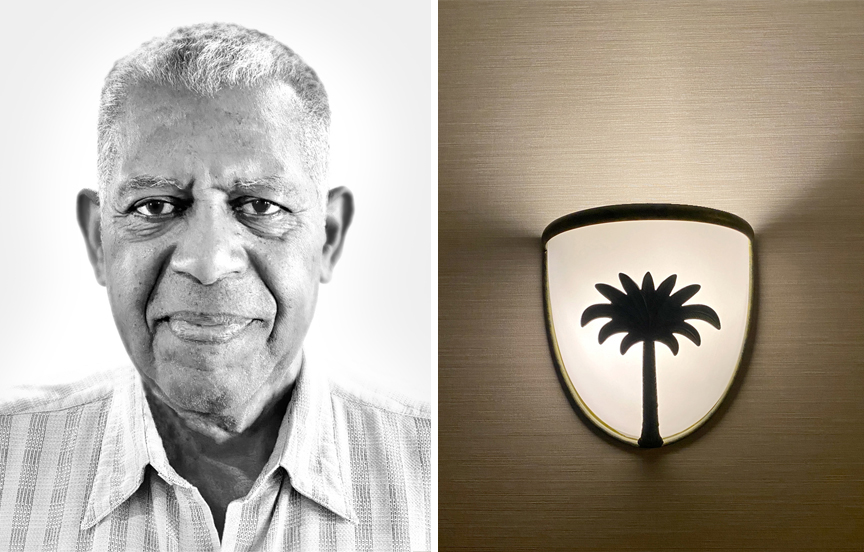
This portrait of fellow traveler Walt (above left) and the wall sconce detail (above right), were captured in the lobby of The Lighthouse Inn, Rockport, Texas. In less than 10 minutes, I had asked to take the portrait, posed and captured the image. The graphic light fixture was taken on the way to dinner the night before.
Post Production included onboard brightness and contract adjustments and offloading for background and skin adjustment, density and perspective adjustment.
Captured on an iPhone 11 Pro Max with Beastgrip and Bluetooth shutter release in natural light.

Wall art is often an integral part of the interior environment of restaurants, bars, shops and destinations. It becomes part of the experience of being there. Photographing wall art adds that perspective to a visual story.
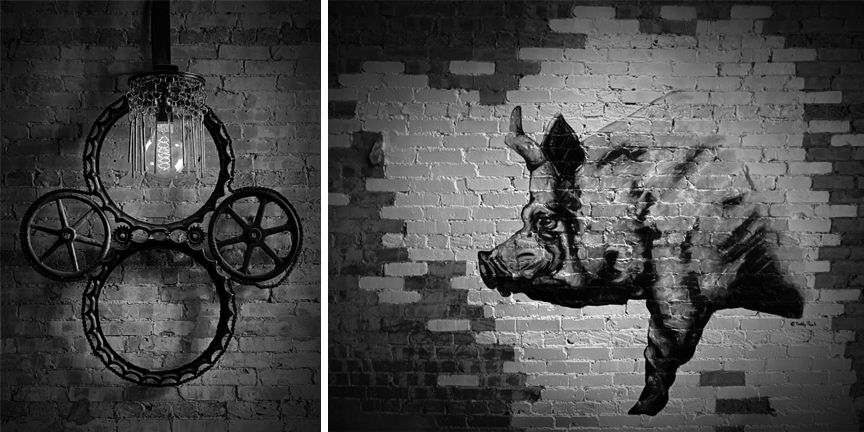
Burnt Bean BBQ. The steampunk light fixture and wall painting were captured after an hour wait in line during a cold morning for some of the best BBQ around. Burnt Bean has a unique, chef driven menu. That uniqueness is reflected in their restaurant’s interior and highlighted with procured wall fixtures and art.
Captured on an iPhone 11 Pro Max with Beastgrip and Bluetooth shutter release in natural light.

I love photographing doorways and bridges. They create transitional images that become metaphors for change. They symbolize connecting one space with another, bringing two sides together.
Doorways represent a change in life, moving from dark to light, outside to inside.
The geometric shapes of bridges are graphically interesting. Functionally they take you from one place to another. Symbolically they represent transition. And the act of creating a means to overcome obstacles.
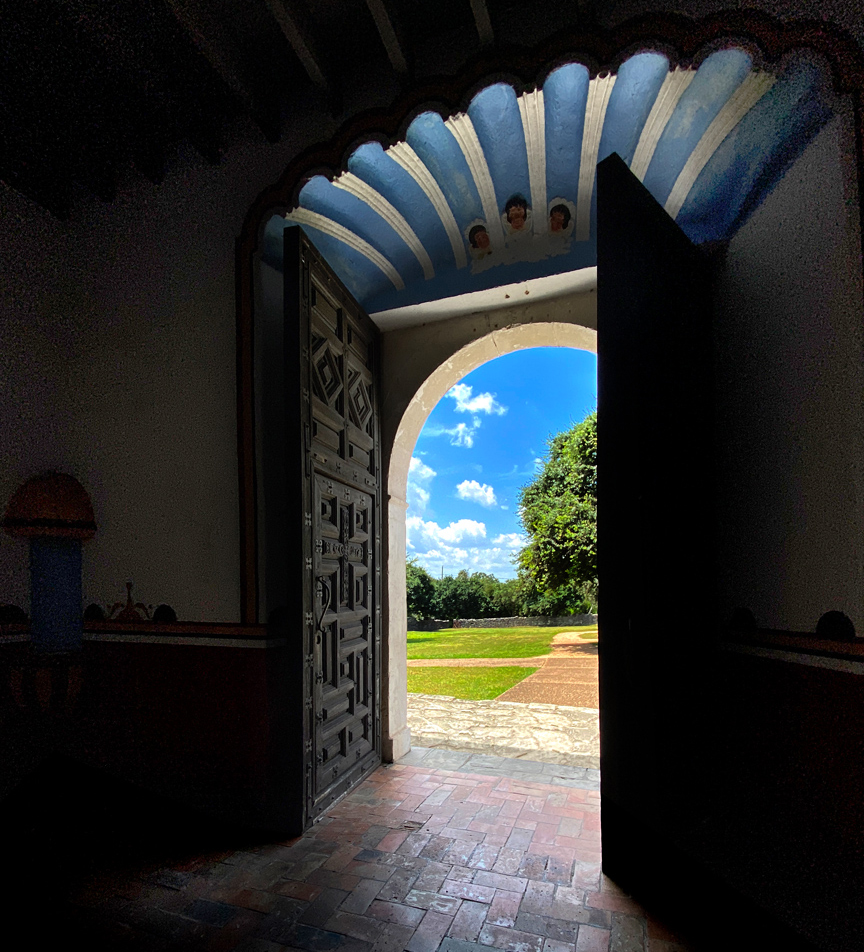
Church Doors. On the way home from our Back to the Beach road trip, we stopped in Goliad, Texas to photograph Mission Espiritu Santo. As soon as I saw the front doors I started looking for where I wanted to put the camera.
I found a camera position near eye level that captured the light spilling into the room from outside. I exposed for the outside light by tapping on screen to lock exposure and focus. Captured on an iPhone 11 Pro Max with Beastgrip and Bluetooth shutter release rig.
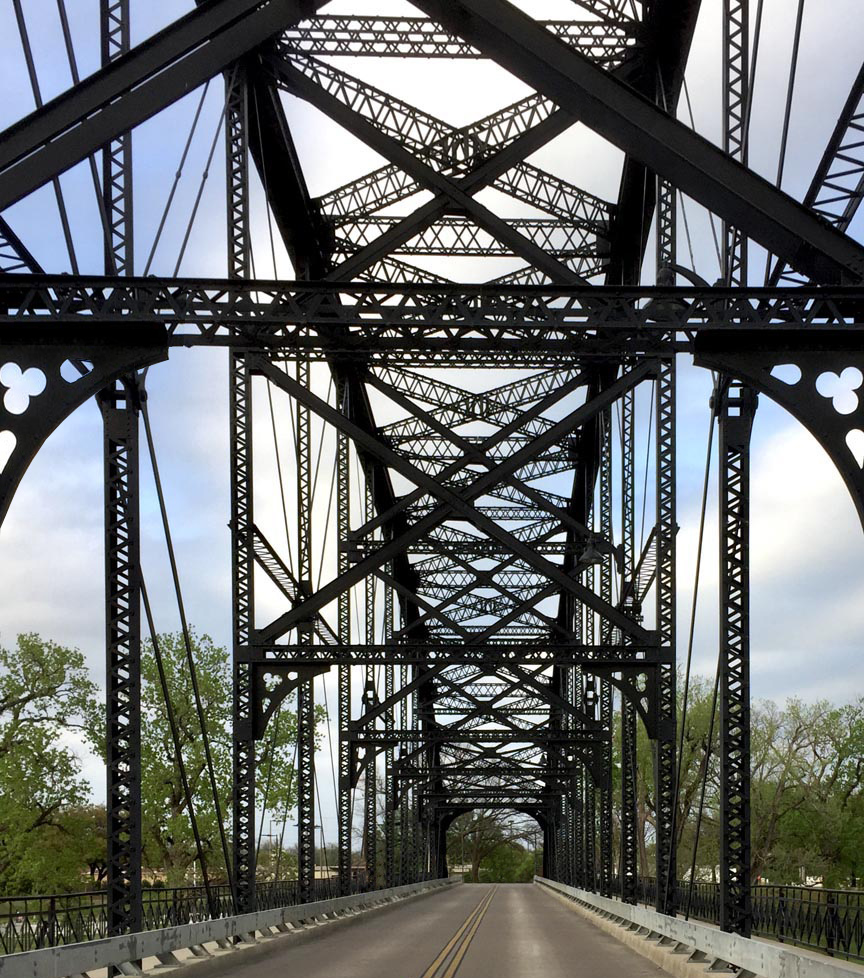
The Washington Avenue Bridge. I’ve photographed the Washington Avenue Bridge three times. First in 2019 capturing the graphic image above shooting handheld, midmorning on an iPhone 6. It was an overnight visit so I only had this one opportunity to shoot.
Built in 1901, the Washington Avenue bridge is one of eight vehicular bridges that crisscross the Brazos River connecting Northeast Waco to the historic shopping/dining district, the Waco Riverwalk, the Dr. Pepper Museum and the Magnolia Market at the Silos.
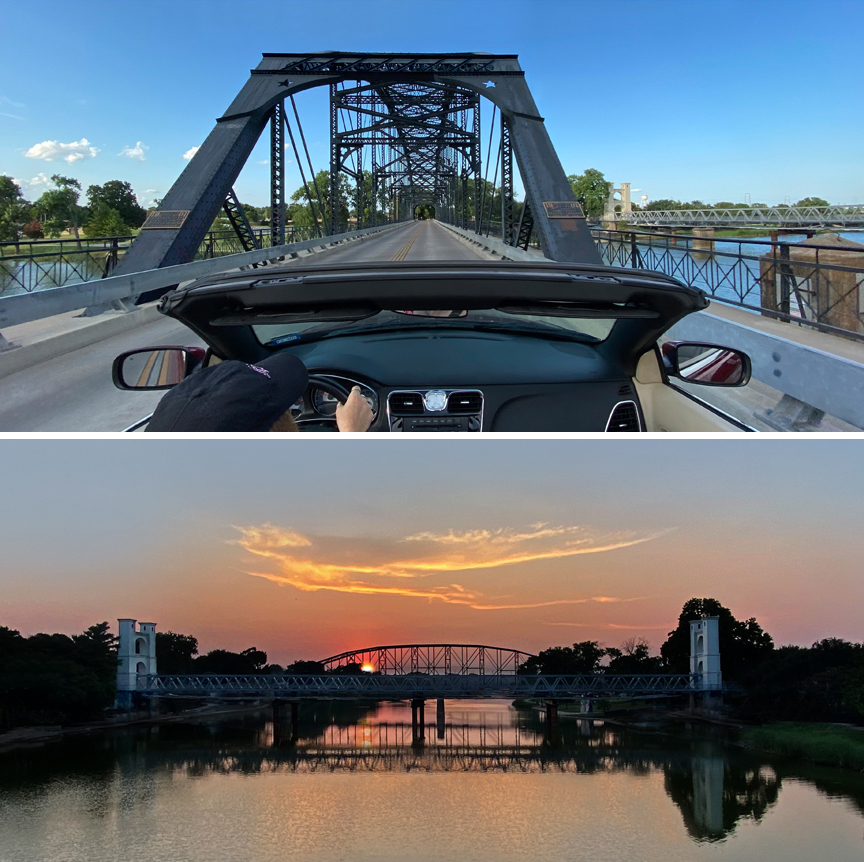
Two years later, in 2021, I photographed Washington Street Bridge again. It was a three day trip so there was time to scout the location first and plan the shoot.
The image above/top was captured midmorning the next day. We drove across the bridge three times to final get this image.
The image above/bottom was captured the next day at sunset. Shooting from the next bridge over, I was able to capture a sequence of the sun going down producing this image with the sun in the golden hour right at the horizon.
Both images were captured handheld on an iPhone 11 Pro Max with a Beastgrip and Bluetooth shutter release setup.
Post production included onboard, iPhone edits adjusting brightness and contrast and offloading for masking, clean up, perspective, color and brightness corrections in Photoshop Elements.

Today, films are using more and more low light imagery to tell a story. Films like The Batman and Zero Dark Thirty. Why? Because low light and night photography produce dramatic images that, to me, make you feel like you’re actually there, that let you jump the gap from viewer to participant.
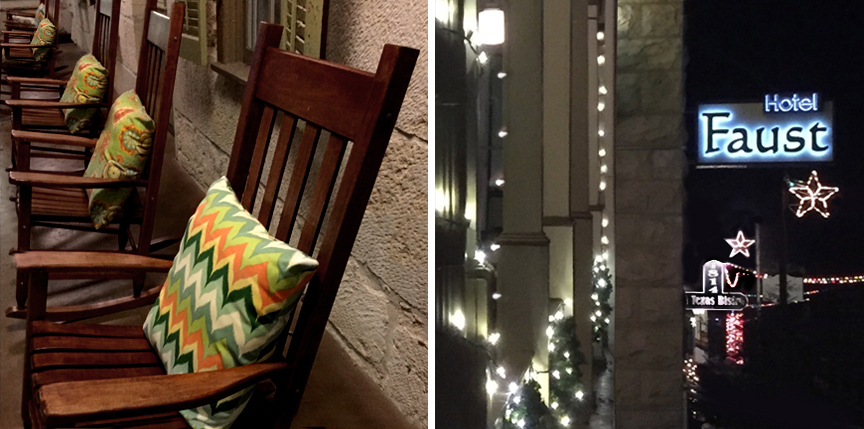
It’s too easy to stop shooting after the sun goes down. The “light” is gone so there’s nothing to shoot, right? Wrong. That’s why I consciously remind myself to go out and shoot at night, even if it’s for just 10 or 15 minutes.
10 or 15 minutes. That’s about how long it took to capture these images of The Faust Hotel at Christmas time. Images that say “Christmas”. Captured hand held on an iPhone 6.
NIGHT PHOTOGRAPHY TIP: Turn your flash off and let the camera calculate the exposure.
Post production included onboard exposure and color adjustments and offloading for final perspective correction and exposure and composition clean up.
NOTE: Starting with the iPhone 11 Pro Max, Night Mode was added. Night Mode uses a variation of HDR image capture technology capturing multiple frames and using parts of each to produce even more extraordinary low light images.


Jump to any Point of View how to guide, process deep dive or a pre iPhone portfolio plus how influences shape the storytelling process and a memoir that looks at the story behind the stories and to Nonlinear Content galleries and stories.

Introduction
Become a storyteller
Technology
- 02A Digital evolution.
- 02B Annie Leibovitz.
- 02C From Batman to the iPhone.
- 02D Henri Cartier-Bresson’s Leica.
- 02E Moving from film to digital to iPhone.
- 02F The self portrait series.
- 02G iPhone camera rigging.

- 03A Working with light.
- 03B The scout.
- 03C Shooting during the golden hour.
- 03D Photographing people.
- 03E Details, shadows, shapes and textures.
- 03F Plate shots and reflections.
- 03G Feed your passions.
- 03H People and food, two favorites.
- 03I On the road.
- 03J Wall art (it’s not what you think).
- 03K Transitional images.
- 03L Night photography.

- 04B Assemblages and abstractions.
- 04C Change the composition of an image.
- 04D Color correction vs color grading.
- 04E Create motion with Live Photo.
- 04F Resize images and retain detail.
- 04G Software and skill building resources.
- 04H On device apps.
- 04I Offboard resources.

- 05A Two key iPhone features.
- 05B Camera and light kit ideas.
- 05C Copied on iPhone.
- 05D Learning post production.
- 05E Designing with type.
- 05F Learning from cinema.
- 05G The three lens solution.


